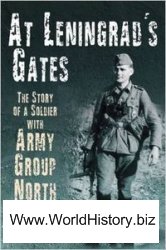The New Look’s assumption that alliance-building would enhance overall US Cold War strength also fell well short of expectations. Pakistan, for example, which signed a mutual security pact with the United States in 1954 and then joined SEATO that same year and the Baghdad Pact the following year, pursued an agenda sharply at odds with the geopolitical calculations that drove US policy. It valued an alliance with the United States primarily as a form of protection against its regional rival, India, rather than from some amorphous Communist threat. As did many American allies, Pakistan thus frequently worked at cross-purposes with its superpower patron, all the while providing a negligible contribution to collective defense efforts. Similar patterns can to some extent be identified in the cases of Taiwan, Thailand, Iran, and Iraq, among other Third World allies. Each was eager to reap the bounty of formal ties with the United States, especially in terms of increased military and economic assistance, but remained much less enthusiastic about committing manpower to regional defense.
Nor did multilateral alliances, at least those outside NATO, add appreciable muscle to the containment strategy. They frequently did, on the other hand, alienate neighboring, non-Communist states. SEATO serves as an illustrative case. The defeat, in 1954, of the American-supported French at the hands of the Chinese-supplied and Soviet-supported Viet Minh in Indochina prompted the Eisenhower administration to cast about for ways of shoring up the crumbling Western position in Southeast Asia. At an August 12, 1954, NSC meeting, foreign-aid chief Harold Stassen lamented that the French defeat once again demonstrated that “a gain to the communists was a loss to us, no matter where it occurred.” Eisenhower concurred, adding that “some time we must
Face up to it: We can’t go on losing areas of the free world forever.”413 What the administration feared, in particular, was unchecked Chinese expansion into the Southeast Asian region. Its response, though, amounted to little more than playing midwife to a weak grouping pledged vaguely to block Communist aggression, with no military force at hand to achieve that objective. In the end, SEATO emerged as a mere paper alliance, its capacity for dealing with either overt aggression or internal subversion well nigh invisible. The alliance did no more than signal a US commitment to the region - though it did, in keeping with the budgetary strictures of the New Look policy, limit the direct military costs to be borne by Washington.
In the Middle East, the US-sponsored Baghdad Pact of 1955 represented another deeply flawed response to perceived Western weakness. It brought together some of the region’s pro-Western states - Iran, Iraq, Turkey, and Pakistan - while leaving out all but one of the Arab states, most of whom staunchly opposed the pact. The alliance also pushed Egypt, the most important of those, to turn to the Soviet bloc for aid in order to counter its regional rival Iraq, now fortified by Western military support. The bitter chill in US-Egyptian relations that followed arguably owed much to the Eisenhower administration’s misguided efforts to build strength through a Western-constructed defense pact that threatened, from Cairo’s perspective, to upset the prevailing regional order.
Those flawed alliances bespoke a broader conceptual problem that plagued Eisenhower’s grand strategy throughout his presidency: namely, the administration’s persistent failure to gauge accurately and adapt effectively to Third World nationalism. The emergence of vigorous, broad-based, and assertive nationalisms throughout the developing world constituted the single most dynamic new element in international affairs during the Eisenhower years. On occasion, the president and other top officials displayed some keen insights about the challenges, and opportunities, this posed. "There is abroad in the world a fierce and growing spirit of nationalism,” Eisenhower wrote British prime minister Winston S. Churchill in 1954. "Should we try to dam it up completely,” he emphasized, "it would, like a mighty river, burst through the barriers and could create havoc. But again, like a river, if we are intelligent enough to make constructive use of this force, then the result, far from being disastrous, could redound greatly to our advantage, particularly in our struggle against the Kremlin’s power.”414 Eisenhower’s conviction that the West
Derived a substantial measure of its overall economic strength from its access to crucial Third World resources - not least the fabled oil reserves of the Middle East - also lay behind his fixation on the developing world’s crucial importance. He appreciated the economic interdependence of the global economy and repeatedly expressed concern about growing American dependence on Third World countries for a wide range of important raw materials.
Yet, the Eisenhower administration never found appropriate means for achieving the goals it sought. Instead, it frequently confused nationalism with Communism, sided with European allies in their disputes with colonies or former colonies, and alienated non-aligned states with its harsh condemnations of neutrality and its destabilizing alliance-building policies. In a wider sense, the administration reflexively wedded American interests to the status quo in areas undergoing fundamental social, political, and economic upheaval.
In the mid-1950s, the Soviet Union began to turn the United States’ Third World problems to its own advantage. Using generous aid and trade offers, Communist Party leader Nikita Khrushchev launched a broad-based campaign to win Third World allies for Moscow. This new departure in Soviet policy sparked genuine alarm in Washington. A CIA report of November 1, 1955, warned that a “grave danger” existed that the new policy “will create an even more serious threat to the Free World than did Stalin’s aggressive postwar policies.”415 John Foster Dulles solemnly proclaimed to the NSC that “the scene of the battle between the free world and the Communist world was shifting.”416 For his part, Eisenhower fretted that because the Soviets were now challenging the United States not with military pressure but with economic weapons, they held a distinct strategic advantage. “This is the selectivity and flexibility that always belong to the offensive,” the president pointed out in a private letter to Dulles. “The defensive must normally try to secure an entire area, the offensive can concentrate on any point of its own
Selection.”417
The Soviet economic offensive in the Third World, in the appraisal of top administration strategists, carried serious implications for US security. Eisenhower voiced the fear that this new Soviet challenge might prove just as difficult to meet as the military challenge. He authorized increases in US economic assistance programs to offset Soviet aid offers. A budget-conscious Congress balked at even those modest increases, however, slashing the
President’s proposed foreign-aid budgets in 1956, 1957, and 1958. The self-imposed spending restraints of the New Look, in conjunction with the additional restraints imposed by Congress, produced, in the end, a remarkably tepid response to what the administration’s own analyses identified as a dire threat.
This mismatch between strategic goals and resource allocations lays bare a significant shortcoming of the Eisenhower approach. In early 1956, the president commissioned a revision in the government’s statement of "Basic National Security Policy" for the express purpose of reassessing the gravity of external threats in light of the recent shift in Soviet tactics. NSC 5602/1, approved by Eisenhower that March, warned not only that the movement of any additional country into the Communist camp would harm US security - a standard, long-held assumption - but emphasized that the resultant damage "might be out of all proportion to the strategic or economic significance of the territory involved."418 This blurring of the distinction between vital and peripheral interests, so reminiscent of Truman’s NSC 68, undercut a key assumption undergirding the New Look. How could the United States now distinguish between areas that needed to be defended and those that did not if the "loss" even of territories possessing minimal economic or strategic value could cause disproportionate harm to national security? Given such a worrisome prospect, how could the administration retain the flexibility and selectivity, along with the budgetary savings, that Eisenhower thought an asymmetrical containment strategy would bring? He never resolved those complex issues.




 World History
World History![Black Thursday [Illustrated Edition]](/uploads/posts/2015-05/1432470149_1431513568_003514b1_medium.jpeg)









